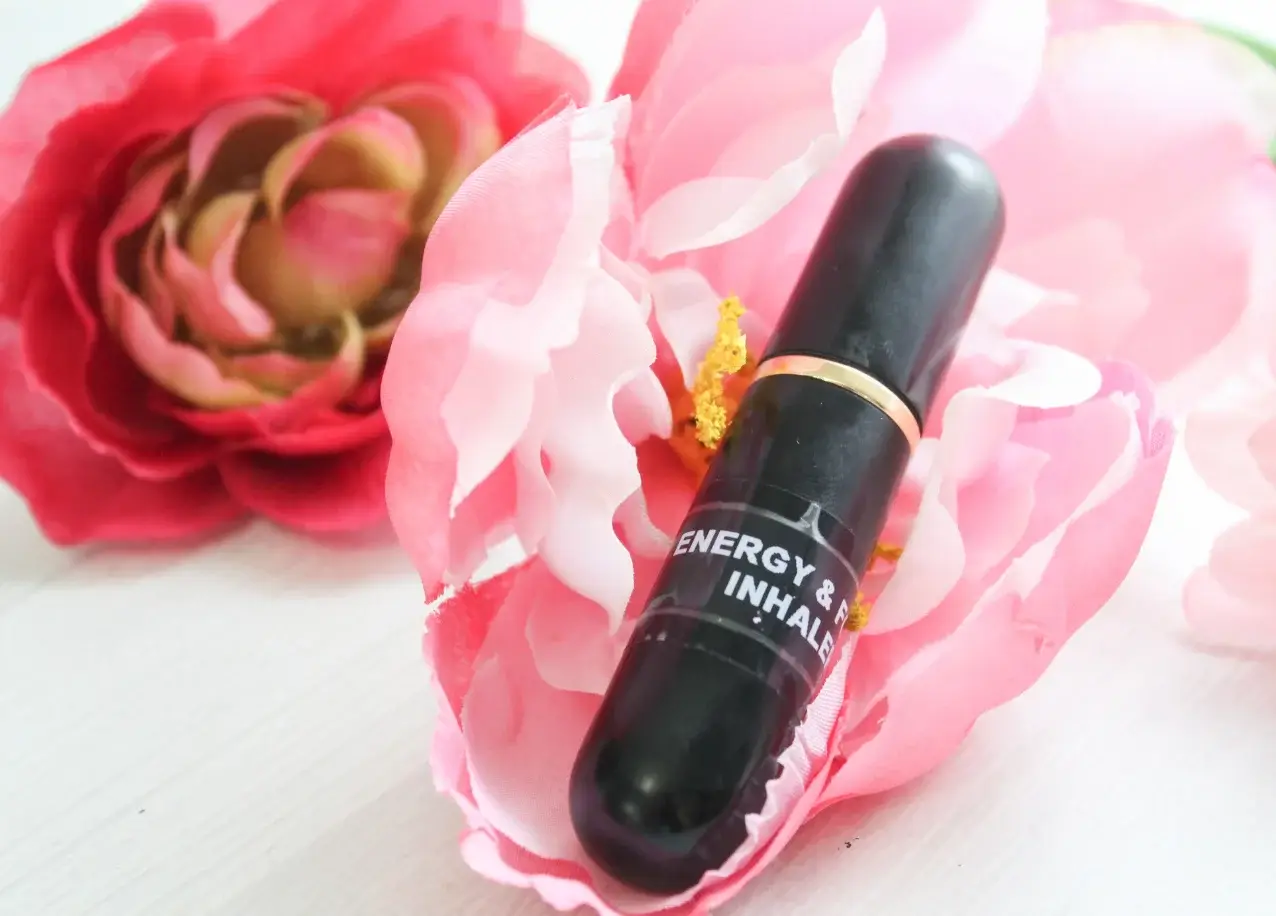We love essential oils because incorporating them into our lives can help us achieve a better degree of clean living. Diluting essential oils at appropriate levels for applications is one of the basic standards of safe use, especially when applying directly to the body. See our free downloadable essential oil dilution chart to help you figure out safe percentages for various types of use.
Sometimes, this is very easy to achieve. But there will inevitably be occasions when we need to combine essential oils with substances that may not really “jive” well with their chemistry.
In other words, the essential oil may not adequately mix into these substances without separation. This in and of itself causes an issue since one of the most important things about essential oil safety is that we need to pay attention whenever we’re putting ourselves into contact with a neat essential oil.
Ultimately, an essential oil’s ability to mix into another substance or liquid boils down to solubility – both the essential oil and whatever you want to incorporate it into.
Are y’all ready to go back to school?
Table of Contents
- Diluting Essential Oils
- Solutions & Emulsions
- Prepared Bases for Essential Oil DIYs
- Substances That DON’T Mix With Essential Oils
- Witch Hazel Facial Toner
- Shot Glass Relaxation Bath
- Quick Countertop Cleaner
- Sunburn Relief Gel
- Sleepy-Time Pillow Spray
Diluting Essential Oils
Essential oils are highly concentrated plant-based volatile organic compounds that pack a super punch of therapeutic benefits. To put this into perspective, it takes roughly three pounds of lavender flowers to distill down to an itty-bitty 15ml bottle of essential oil. It’s hard to conceptualize because one lavender flower is so light; imagine three pounds!
This being said, essential oils need to be used wisely. While there is a time and a place for neat application, the smart way to apply oils topically is to dilute them first. Carrier oils are non-volatile oils and are not irritants, and essential oils can be blended into them first before applying them to the skin.
Popular carrier oils include coconut oil, olive oil, sweet almond, jojoba, avocado, apricot, and sunflower. Most carrier oils have their own health benefits that you can explore to create even more beneficial blends.
Dilution Cheat Sheet
Topical application can be directly in a small area, such as for scar healing, or broader for massage oil. The important variables here are the dilution rates you choose:
0.5% Dilution– Strong oils, applied to children and oils you are testing for sensitization. The heavy dilution allows for greater distribution throughout the application and less per dose.
Ideal for irritating oils, children, and those who are highly sensitive. Ex: cinnamon, eucalyptus, peppermint.
1% Dilution – Even adults who tolerate oils well will still find some oils too strong for normal applications. A 1% dilution rate protects your skin while still enjoying the benefit of the more potent essential oils or use on sensitive areas of the skin. Ideal for facial applications and the treatment of delicate skin. Ex: tea tree for acne, frankincense in a facial toner, etc.
2-3% Dilution – This is the most common dilution range, suitable for massage oils, healing treatments, lotions and creams, and cosmetic applications. It is enough to gain significant benefits from the essential oil without risking sensitization. Unless the oil is particularly potent or you have sensitive skin, this is likely to be the dilution you’ll use. Ideal for most applications – lotions, creams, salves, balms. Ex: geranium, helichrysum, chamomile.
5%+ Dilution – Higher concentrations should be used with care. Alternatively, highly safe oils can be used in small amounts on tiny areas of the skin – for example, as an intense acne treatment. Know your oil’s safety profile and choose high concentrations with caution. Ideal for specific situations based on extreme safety and high potency in a targeted area OR further dilution beyond the initial formula. Ex: lavender, sweet orange, tea tree.
Using these conversions:
- 1% dilution: 6 drops of EO per ounce of carrier oil (1% of 600 drops is 6)
- 2% dilution: 12 drops of EO per ounce of carrier oil (2% of 600 drops is 12)
- 3% dilution: 18 drops of EO per ounce of carrier oil (3% of 600 drops is 18)
If working with tablespoons is more comfortable for you, 1 ounce = 2 tablespoons. So, there are 300 drops of EO in a tablespoon.
- 1% dilution: 3 drops of EO per tablespoon of carrier oil (1% of 300 drops is 3)
- 2% dilution: 6 drops of EO per tablespoon of carrier oil (2% of 300 drops is 6)
- 3% dilution: 9 drops of EO per tablespoon of carrier oil (3% of 300 drops is 9)
If working with grams, 1 drop of essential oil = 0.02 to 0.03 grams approximately (depending on your dropper), which converts to 20-30 milligrams or 20000 micrograms (µg).
So 30 mg is about 1 drop.
Solutions & Emulsions
Carrier oils work nicely to reduce (or dilute) the concentration of essential oils because their overall chemical qualities match that of essential oils. Both are lipid-loving substances. Remember that like dissolves like? So, we can use a carrier oil to sufficiently dilute our essential oils. You can read more about how to do that here.
Real life isn’t always simple, however, so sometimes we need a base beyond just a carrier oil. That’s where solutions and emulsions come into play – they are a step up into complexity.
Sometimes, we need our essential oils to mix into substances that they are generally not miscible in – meaning they don’t fully dissolve or mix into each other. When this is the case, we have two potential options.
1. We can reach for a substance that will help dissolve the essential oil into the uncooperating substance, thus creating a solution.
2. We can utilize something that will force the essential oil to combine with something it usually wouldn’t, creating an emulsion.
SOLUTIONS
You get a solution when one substance (a solute) is dissolved into another substance (known as the solvent). (1)
Substances that can dissolve essential oils include 190 proof alcohol, perfumer’s alcohol, and 91% isopropyl alcohol. When the essential oil is first added to one of these substances, it can later gently be added to an aqueous substance like water, witch hazel, or hydrosol. Likewise, you can add an aqueous substance directly to your solubilized mixture.
The essential oil, being dissolved into a substance that cooperates nicely with these other mentioned substances, can be safely incorporated (or really, diluted) into something it typically would not work well with. In other words, add your essential oils to the alcohol first and then to your other ingredients.
EMULSIONS
An emulsion occurs when one liquid is dispersed through another it is typically not miscible in. (2)
Where essential oils are concerned, an emulsion occurs through the use of something called a surfactant or another substance with surfactant properties – such as liquid soap. Surfactants work by reducing the surface tension of the substance it is to be dissolved into, allowing for a substance (in this case, essential oils) to be distributed throughout another liquid, such as water. (3)
One important thing to remember is that you must first add your essential oil to your surfactant and make sure it is sufficiently mixed before adding it to the other liquid.
So, for example, if you want to mix essential oil into your bathwater safely, your best bet is to add the essential oil to some liquid soap (good options for this include liquid castile soap), mix it thoroughly, and then add that mixture to your bath water, creating an emulsion.
Want to make a quick pillow or air spray?
Diluting essential oils by first solubilizing them is the way to go. Add your essential oil to some 190-proof alcohol, and gently add your water to it. The solution you create from the high-proof alcohol and essential oil can then be diluted into the water (using at least a 1:4 ratio of alcohol to water should ensure some preservation and longer shelf life as well!).
Prepared Bases for Essential Oil DIYs
A third option to mix your essential oils would be prepared cosmetic bases. Many supply companies carry pre-made lotions, creams, and sometimes gels intended for you to add your own fragrance product to.
These products are created with the additional fragrance load in mind, so they contain enough surfactant to handle you adding essential oils to them. These can be especially helpful as they will detail precisely how much extra essential oil can be added to the product.
Another product that could hold essential oil for topical applications is thickened aloe gel. These gels differ slightly from pure aloe gel in that they have a thickener like a carbomer or xanthan gum added to them, which offers some stability in being able to the essential oil when mixed well enough.
SUBSTANCES THAT DON’T MIX WITH ESSENTIAL OILS
The options mentioned above are solid choices to reach for when solubilizing or diluting essential oils or creating some cooperation between them and liquids they won’t usually mix in. But there are a lot of substances thought to work with essential oils like this that do not.
Many substances promoted in aromatherapy traditions or online DIY recipes don’t actually blend with essential oils the way people think they do. This could potentially leave you at risk for skin irritation or sensitization.
When I first started learning about essential oils, some of the information was misleading or incorrect. When you understand the chemical properties, you realize that much of what is out there doesn’t actually work. Here’s a list of substances that cannot properly dilute or be used to disperse your essential oils completely:
- distilled water
- deionized water
- witch hazel
- hydrosols
- vodka
- sea or table salt
- Epsom salts
- magnesium oil
- baking soda
- sugar
- aloe vera juice
- pure aloe gel
- glycerin
- milk
- honey
- peroxide
In a nutshell, the chemical properties of these substances don’t match up with those of essential oils, so diluting essential oils into these things will not be effective without incorporating a surfactant, as discussed above.
A quick note on honey: while it is not recommended to use honey when diluting essential oils into water, it does contain enough binding properties to mix essential oils into for quick internal dosing if necessary. Same with vodka, glycerin, milk, and aloe vera juice.
Here’s a brief list of products often made in the home done just a little better using the principles for diluting essential oils mentioned above. For DIY products containing aqueous ingredients, such as water and witch hazel, be sure to make small batches to use up within a week since home DIY products have short shelf lives!
Witch Hazel Facial Toner
This delightful toner is refreshing and clarifying. Your skin will love being pampered without the use of toxins!
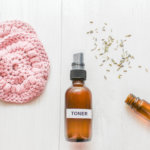
Witch Hazel Facial Toner
Quantity
Ingredients
- 6 drops essential oils*
- 1½ teaspoons 190 proof alcohol OR the highest proof alcohol you can find
- Unscented witch hazel
Supplies
- Glass measuring cup or jar for mixing
Instructions
- Add the essential oils and alcohol to a glass measuring cup or jar. Gently stir to mix.
- Pour into a glass spray bottle, then fill the bottle the rest of the way with witch hazel, leaving enough room to replace the lid.
- Replace the top and shake to mix.
- To use, spray toner on a cotton round and gently swipe over the face.
Notes
Step One: Add Essential Oils
Place the essential oils and alcohol in a glass measuring cup or jar. Stir to mix. See the above notes for customizing the oils to fit your skin needs.
Step Two: Tone Your Face
Gently stir the mixture to combine and pour into a dark glass spray bottle. Fill the bottle the rest of the way with witch hazel. Store away from light.
To use, douse a cotton round with the mixture and gently wipe over the face. No need to rinse!
Shot Glass Relaxation Bath
Need some R&R? Try our Shot Glass Relaxation Bath! This DIY comes together in minutes.
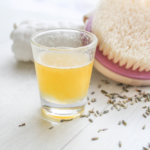
Shot Glass Relaxation Bath
Quantity
Ingredients
- 10-20 drops essential oils*
- Organic unscented liquid castile soap
Supplies
- Shot glass
Instructions
- Add the essential oils to a shot glass.
- Fill the glass the rest of the way with liquid castile soap and stir to mix.
- To use, pour the shot under running water. Relax and enjoy!
Notes
Step One: Add Essential Oils
Add the essential oils of your choice to a shot glass. See the notes above for suggestions on selecting relaxing EOs.
Step Two: Add Liquid Soap
Fill the rest of the glass with castile soap. This helps the EOs to dilute properly. Slowly stir to combine.
Your mixture should look milky, like in the photo above. To use, add the shot to running bathwater. Doing this helps disperse the mixture properly. Enjoy your relaxing bath!
QUICK COUNTERTOP CLEANER
My Quick Countertop Cleaner gets the job done naturally! It smells incredible and degreases the roughest surfaces.
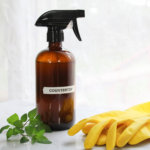
Quick Countertop Cleaner
Quantity
Ingredients
- 36 drops essential oils*
- 2 tablespoons organic unscented liquid castile soap
- Purified OR distilled water
Supplies
Instructions
- Add the essential oils and liquid soap to a spray bottle. Mix to combine thoroughly.
- Fill the bottle the rest of the way with distilled water. Replace the top and shake to mix.
- Use as you would a conventional kitchen cleaner.
Notes
Step One: Mix the Essential Oils and Soap
Add the essential oils of your choice and liquid soap to a spray bottle. See the notes above for tips on choosing antimicrobial EOs.
Gently mix to combine thoroughly.
Step Two: Add Water
Fill the bottle the rest of the way with distilled water. Replace the top and shake gently to mix.
Use as you would a conventional kitchen cleaner. Enjoy your clean counters!
Sunburn Relief Gel
Our Sunburn Relief Gel is a Summer must! It soothes inflamed skin and instantly cools.
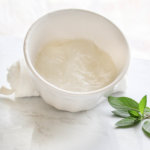
Sunburn Relief Gel
Quantity
Ingredients
- ¼ teaspoon xanthan gum
- 4 ounces aloe vera gel
- 48 drops essential oils*
Supplies
- Glass jar for storage
Instructions
- Whisk the xanthan gum into the aloe vera gel until smooth.
- Add the essential oils and mix well.
- Store in a glass jar in the refrigerator.
- To use, spread over sunburned skin.
Notes
Step One: Thicken the Aloe Vera Gel
Whisk the xanthan gum into the aloe vera gel until smooth.
Step Two: Add the Essential Oils
Add the essential oils of your choice and mix well. See the above notes for my favorite combination.
Stir the mixture well until it turns a milky color. Store in the fridge and apply as needed.
Sleepy-time Pillow Spray
If you have trouble sleeping, give this pillow spray a try! It combines the best relaxing essential oils to provide you with a fantastic night’s sleep.
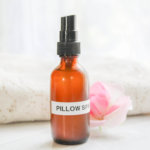
Sleepy-time Pillow Spray
Quantity
Ingredients
- 60 drops essential oils*
- 1 tablespoon + 1 teaspoon 190 proof alcohol OR the highest proof alcohol you can find
- Purified OR distilled water
Supplies
- Glass jar for mixing
Instructions
- In a glass jar, mix the essential oils and alcohol until well combined.
- Pour into a glass spray bottle.
- Fill the bottle the rest of the way with distilled water, leaving enough room to replace the top.
- Replace the lid and gently shake to combine.
- To use, spray on linens and pillows before bed.
Notes
Step One: Mix Essential Oils and Alcohol
Mix the essential oils of choice and alcohol until well blended. See the above notes for relaxing EO suggestions. Add to a 2-ounce spray bottle.
Step Two: Add Water
Fill the bottle the rest of the way with distilled water. To use, spritz on pillows and bedding before you go to sleep. Sweet Dreams!
God created each of us to be unique, and our body care products can reflect that! As you learn about diluting essential oils, remember to customize your recipes to fit your specific needs.
- https://www.chem.purdue.edu/gchelp/solutions/whatis.html
- http://www.thermopedia.com/content/274/
- https://www.britannica.com/science/surfactant























